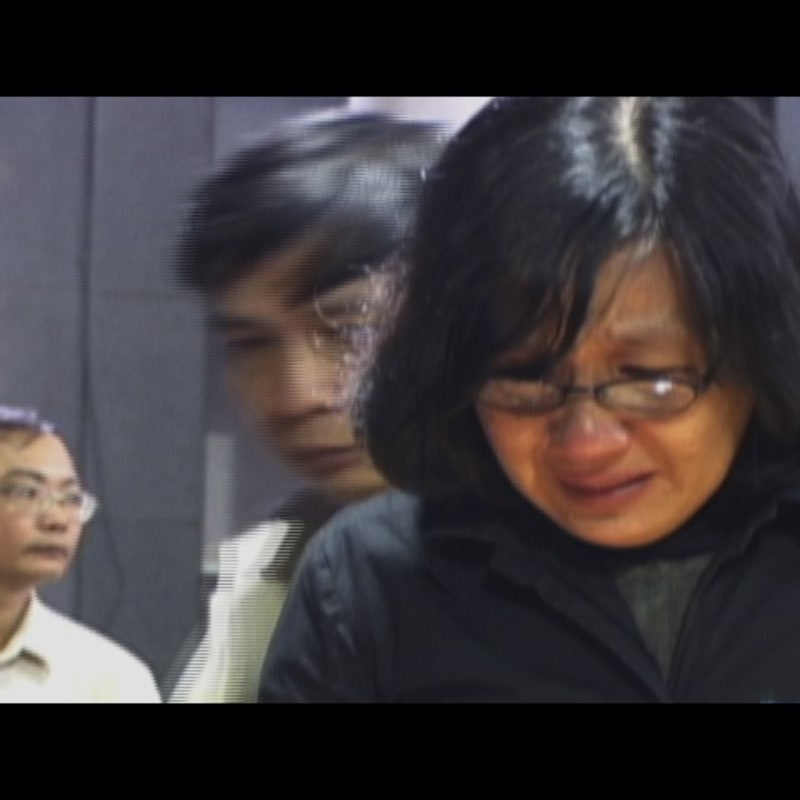The exhibition starts with my quarantine experience of daily life and reading. I kept noticing a stark contrast between real time and reading time; real time became absurd and incomprehensible, as if the existence of time could only be briefly detected when I was reading. Meanwhile, what was fading included not only my sensitivity to time, but also the complacent judgment and trust I once had in the meaning of reality.
The exhibition "The New Survivors" takes video as both a display medium and research object to reflect how the memory of contemporary trauma is recorded, produced, and revised, and in turn constructs new meaning. Some trauma theorists agree with Sigmund Freud’s metaphor that trauma occurs like a crystal: it never shatters haphazardly, but rather always follows a secret fault line that makes it disintegrate in a specific manner.(1) However, newer versions of trauma theory try to look beyond the presumed connection between present traumas and past sexual traumas(2). In her 2012 book, Catherine Malabou cites brain injury as an example of a trauma that immediately has irreversible consequences, destroying the subject’s singular identity almost immediately.(3) She describes it as follows: "In either case, trauma names a shock that forces open or pierces a protective barrier."(4)
This shock follows the trajectory of trauma theory towards the banal and arriving in the mixed-up reality we face today, an era in which man-made traumatic events such as disasters, violence, and conflict are naturally disguised, falsified, and fabricated, and become intrinsic to the new normal. Perhaps it is as Malabou says: "Trauma today is the heterogeneous mixture of nature and politics at work in all types of violence, this mixture where politics is annulled as such so that it assumes the face of nature and where nature disappears beneath the mask of politics."(5) Traumas of different types and origins are produced and promoted by image systems, reaching the layer of the individual subconscious and diffusing new traumas. The "new" corresponds with an unrecognizable state, like the human immune system that has never been able to find antibodies (and T cells) to recognize and respond to a new virus. In this manner, the exhibition firstly records the exposed wounds, then examines the festering of the wounds under both natural and technological time. The audience is ultimately led to different traumatized subjects and confronted with existential questions: is the subject alive, and if so, in what form does it exist?
Slavoj Žižek concludes his "living dead" thesis with the statement that the 21st century is still the century of the living dead, wherein the term "living dead" no longer refers exclusively to the concentration camps, but rather a composite image of contemporary globalized traumas. On the last day of the 2010s, people around the world counted down to the arrival of a new era. However, this new era heralded a global public health crisis unprecedented in this century, or even in modern history. As a multilayered political, economic, and social crisis, the pandemic seemed to create a vicious cycle of suspensions and restarts for living things. The experience of trauma that the pandemic induced has been much greater than that of a single traumatic encounter (such as a disaster, war, or disease) in history. It is more like a hybrid or compound trauma, an unexpected shock that began out of the blue and will remain dormant for a long time in the life cycle of humanity. As such, "The New Survivors" travels through both present and historical moments to bear witness to the whole process: exposure to trauma, subsequent deterioration, and the survival of the subject. At the end of the exhibition, the rewinding of the images sets the stage for the audience to ask themselves: if we could walk through the exhibition in reverse, would we be able to revisit these sites of trauma and their histories anew?
Reference
(1) Sigmund Freud, "Lecture XXXI-The Dissection of the Psychical Personality (1933 [1932])," in New Introductory Lectures on Psycho-Analysis (Complete Psychological Works of Sigmund Freud), eds & trans. James Strachey et al, (Minneapolis: W. W. Norton & Company, 1990), 59.
(2)Sexual traumas originated from Freud's theory that all hysterical symptoms were caused by childhood sexual "abuse or molestation" which left unconscious memories.
(3) Catherine Malabou and Steven Miller, The New Wounded: From Neurosis to Brain Damage, (New York: Fordham University Press, 2012), xviii.
(4) Ibid, 6.
(5) Ibid, 156.
